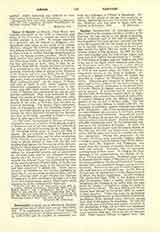www.catholic.com/encyclopedia/caesaropolis


Click to enlarge
Caesaropolis, a titular see of Macedonia, the early name and the site of which have not yet been identified. It is mentioned in Gelzer’s “Nova Tactica” (1717) and in Parthey’s “Notitiae episcopatuum”, III (c. 1170-1179) and X (twelfth or thirteenth century) as a suffragan of Philippi in Macedonia. Lequien (II, 65) speaks of the see, but mentions no bishop. Manuscript notes give the names of two titulars, Meletius, who was alive in April, 1329, and Gabriel, in November, 1378.
S. PETRIDES
Enjoying this content? Please support our mission!Donatewww.catholic.com/support-us

